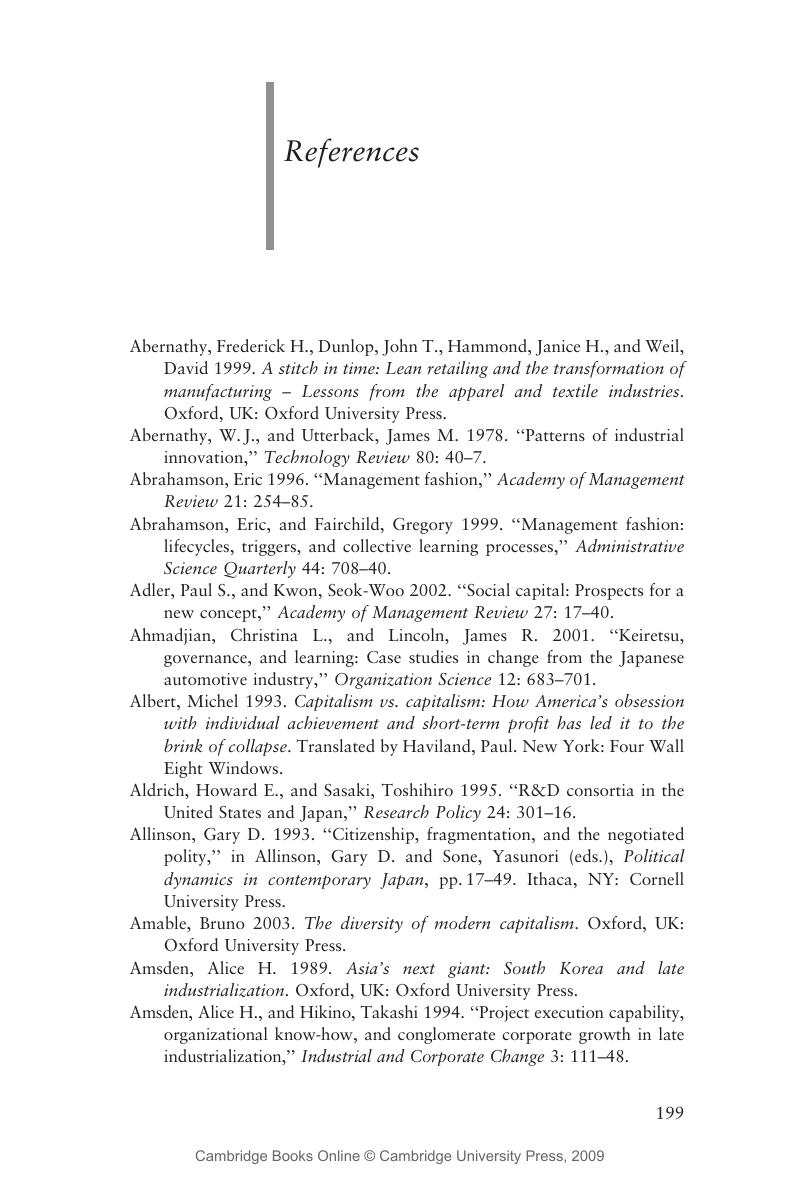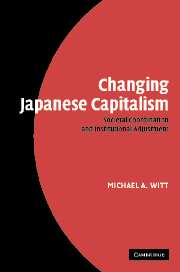Book contents
- Frontmatter
- Contents
- List of Figures
- List of Tables
- Foreword
- Acknowledgements
- 1 Introduction
- 2 Continuity and change in the Japanese business system
- 3 Coordination and institutional adjustment
- 4 Coordinating networks in the Japanese business system
- 5 Intra-industry loop networking
- 6 R&D consortia and intra-industry loops in new industries
- 7 Conclusion
- Appendix
- References
- Index
- References
References
Published online by Cambridge University Press: 21 October 2009
- Frontmatter
- Contents
- List of Figures
- List of Tables
- Foreword
- Acknowledgements
- 1 Introduction
- 2 Continuity and change in the Japanese business system
- 3 Coordination and institutional adjustment
- 4 Coordinating networks in the Japanese business system
- 5 Intra-industry loop networking
- 6 R&D consortia and intra-industry loops in new industries
- 7 Conclusion
- Appendix
- References
- Index
- References
Summary

- Type
- Chapter
- Information
- Changing Japanese CapitalismSocietal Coordination and Institutional Adjustment, pp. 199 - 220Publisher: Cambridge University PressPrint publication year: 2006



